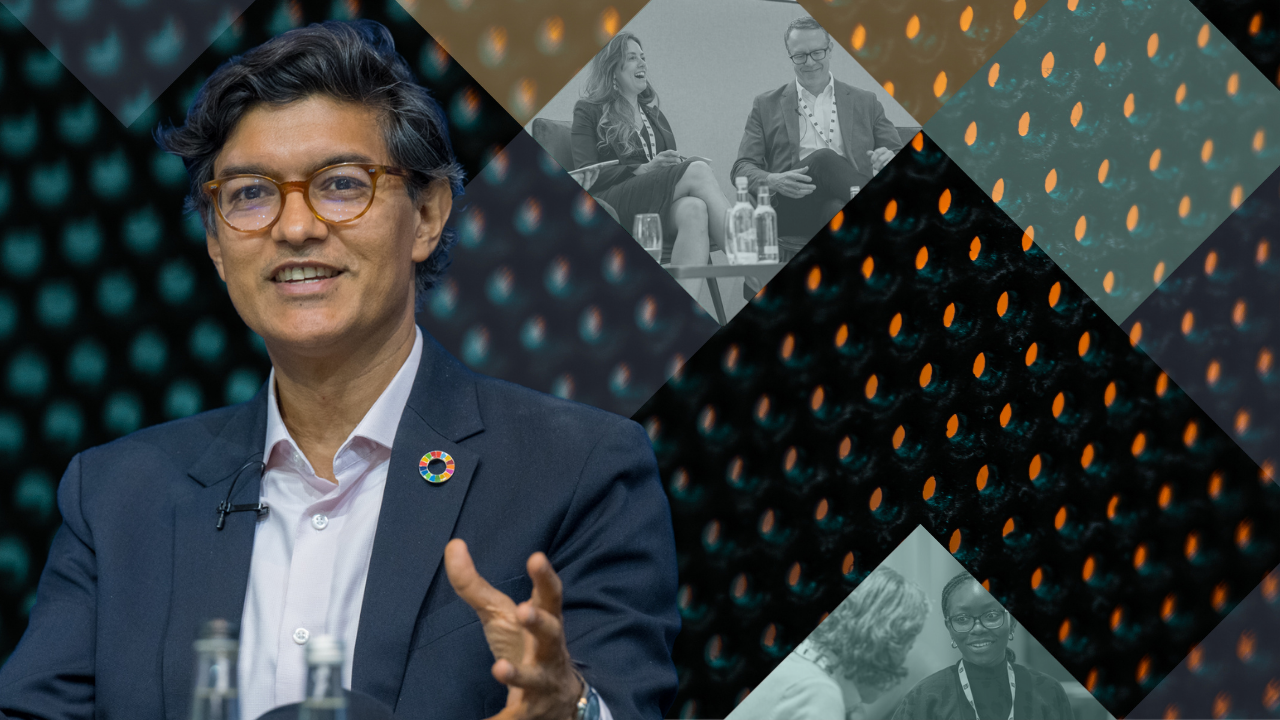To win one IR Magazine Award is an accomplishment, but to win three is something of a major achievement. This is exactly what Banco Santander did at this year’s IR Magazine Awards – Europe, picking up three trophies: for best investor event (joint winner with Hugo Boss), best IR during a corporate transaction and best use of multimedia. That’s an impressive roll of honor across a wide range of categories.
The story behind these wins is one of effective team work, excellent strategic thinking and top-class implementation. Looking at the best investor event award, Sergio Gámez, the global head of shareholders and investor relations at Banco Santander, explains why the firm did so well in this category: ‘We selected a different venue – the NYSE – to give the US investor community the opportunity to attend our group strategy update. That gave US investors direct access to our group senior management.’
It also proved extremely popular and was attended by more than 300 people. Success was not just down to the event, however; the range of access was also vital. ‘The fact that we provided corporate access to the management team – not just the CEO and CFO, but also all the country heads – was very positively recognized by investors and analysts,’ Gámez says.
In addition, local providers were employed, boosting a focused ESG narrative. The planning process took time and application, involving around four months’ work, with the team traveling to New York to look at different locations and generally make sure everything would fall into place.
Santander’s award for best IR during a corporate transaction was for its acquisition of ailing rival Banco Popular for just €1 ($1.10) in June 2017. ‘It was a really huge communications effort,’ recalls Gámez. ‘We had to provide a rationale and equity story behind the acquisition to everyone in the market. Then we had to raise the capital needed – several billion euros – by convincing investors.’
Their efforts paid off, however. The IR team’s visits covered a total of 135,000 kilometers, taking in more than 40 cities and towns, including locations across the US and Asia and throughout Europe.
‘We were able to make contact with more than 300 equity investors, including current and new investors,’ says Gámez. ‘We just delivered the material facts rather than go through the full presentations, which was more value-added for us and for the investors. And the presentations were sent ahead of the meetings.
The market showed it was enthusiastic about the deal.’ These visits proved the power of a strong narrative and won over even the more disquieted elements of Banco Popular’s shareholders.
Multi-faceted approach
On Santander’s use of multimedia, Gámez is keen to highlight the importance of technology in conveying the company message. ‘We have been actively promoting our communications through digital channels and corporate social networks,’ he explains. ‘We like to have a continuous and credible communication across all channels.’
Indeed, one of the judges in the multimedia award category had just one word to describe Banco Santander’s AGM app: awesome. Another said that Santander’s multimedia offering really ‘stands out’ with ‘clear evidence of a lot of investment in a very professional multimedia toolbox for investors.’
The bank uses six different social media channels, in English and Spanish, from YouTube videos to Pinterest boards, from Twitter – where its corporate-only @bancosantander handle has more than 57,000 followers – to LinkedIn, with almost 514,000 followers at time of writing and where posts generally get more than 150,000 impressions each. The bank is so successful on social media that executive chair Ana Botín is already a LinkedIn ‘influencer’ having only joined in February 2018, while her Twitter account hit 10,000 followers within 24 hours.
In addition to this outpouring on social media, the Banco Santander website has its own dedicated section for shareholders and investors. ‘We have multimedia content that is very personalized and responsive, with the necessary technology, making for a useful navigation experience,’ observes Gámez.
The bank has a micro-site, too, which Gámez says makes for ‘very much complete access. [The purpose] is to have super-active communication with the market: all these channels, social media platforms and networks are a necessary condition for our successful IR.’
Hitting the road
That said, in order to ensure all this falls into place, more traditional approaches like roadshows are still very central to the work of the Banco Santander IR department. ‘I spend a lot of time on the road,’ says Gámez. ‘I can only understand the role of head of investor relations by being extremely active and extremely close to the market.’
Putting that into context, in 2017 Santander’s IR team met with more than 1,000 investors worldwide, held more than 200 roadshows and more than 100 conference calls, and attended around 30 conferences – a pretty significant outreach.
‘These numbers show the commitment and execution of being transparent and close to the market,’ says Gámez. ‘We reached two thirds of all our institutional investors [in 2017].’
Within all this activity, there is a strong strategic approach to investor targeting. The strategy relies on three tiers: firstly, the group analyzes its current investor base, which Gámez says is ‘very important in order to retain a relationship with the owners of the bank.’ Secondly, Santander works with brokers that can help it assess whether there are investors out there to focus on and give the bank an assessment of the overall market. The third pillar is the new investor platforms arriving as a result of Mifid II.
‘These investors are usually medium to small in size and do not generally engage with brokers but prefer to have a direct relationship,’ notes Gámez. ‘So with these tiers in mind we try to reach out across all geographies on a quarterly basis. The outcome is a very comprehensive travel plan!’
Does Gámez feel the relationship with brokers has changed post-Mifid II? ‘We do not have the perception that things have changed,’ he says. ‘We are possibly a unique case, given our market cap size. What is clear so far, however, is that we have not seen Mifid II as a game changer in our relationship with brokers.’
Teamworking
Any organization that achieves success, especially at the level that Banco Santander has achieved, usually has a solid team ethic, and this is certainly the case with Santander’s investor relations team, which reports into the group CFO.
‘In order to provide better attention to shareholders, we have two specialized teams: one for institutional and one for retail,’ explains Gámez. ‘On the institutional side, there are two teams that cover analysts and fixed-income managers, and a dedicated team to serve equity analysts and investors. There is also a marketing team responsible for analyzing what is happening in the market and looking at the bank’s different geographies and strategies, with heads of investor relations in both New York and Hong Kong.’
Within that, what role does the senior management team play in the IR function? ‘It is a very active role,’ says Gámez. ‘The chief executive, chairman and CFO all regularly sit in on meetings with investors. The market appreciates that, as can be seen from the awards we’ve won. They also attend all the main conferences in Europe and the US, and we organize meetings between investors, potential investors and top management across all the geographic regions and industry sectors.’
In addition – from a slightly different though related perspective – independent directors regularly meet to review the corporate governance structures and strategy of the bank. ‘We like to keep dialogue open and fluid between investors, the market, the IR team and management,’ explains Gámez.
On a more focused basis, the bank plays a strong role in making the case for the Spanish IR market, and Gámez himself is a very active and visible vice president of Spanish IR association Aeri. But he has not become complacent since winning the awards: he is passionate about taking home the multimedia award, and almost as passionate about the bank’s approach to technology.
‘Technology is very important to us,’ he says. ‘I think we were the first bank to use blockchain technology at an annual meeting. What’s more, technology – and the way we use it – provides a fundamental shift in the way we deliver value to our shareholders. We want to be part of that change going forward.’
|
Proxy voting pioneer Investors at Banco Santander were given a glimpse into the future of proxy voting at the bank’s annual general meeting this year, where they were encouraged to cast their votes using blockchain technology, writes Ben Ashwell. Blockchain is most commonly known as the technology that underpins digital currency bitcoin, and this year Banco Santander partnered with Broadridge Financial Solutions to explore the feasibility of using blockchain at its AGM. The two companies started collaborating with JPMorgan and Northern Trust in November 2016, and a trial run was carried out at Santander’s AGM in 2017 to give the bank’s institutional investors a sense of how the technology would work. At this year’s AGM on March 23, investors were asked to cast their vote twice: once in the traditional manner and once on the distributed ledger, a platform that links all users and is not governed by a central authority. Investors accessed the distributed ledger through a plug-in for their web browser, and 21 percent of AGM participants used the new technology. The results of the votes cast using blockchain were available within two days of the AGM, compared with the usual two or three-week wait associated with traditional proxy voting. |
This article was published in the winter 2018 issue of IR Magazine – the 30th anniversary issue of IR Magazine






